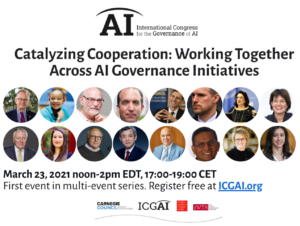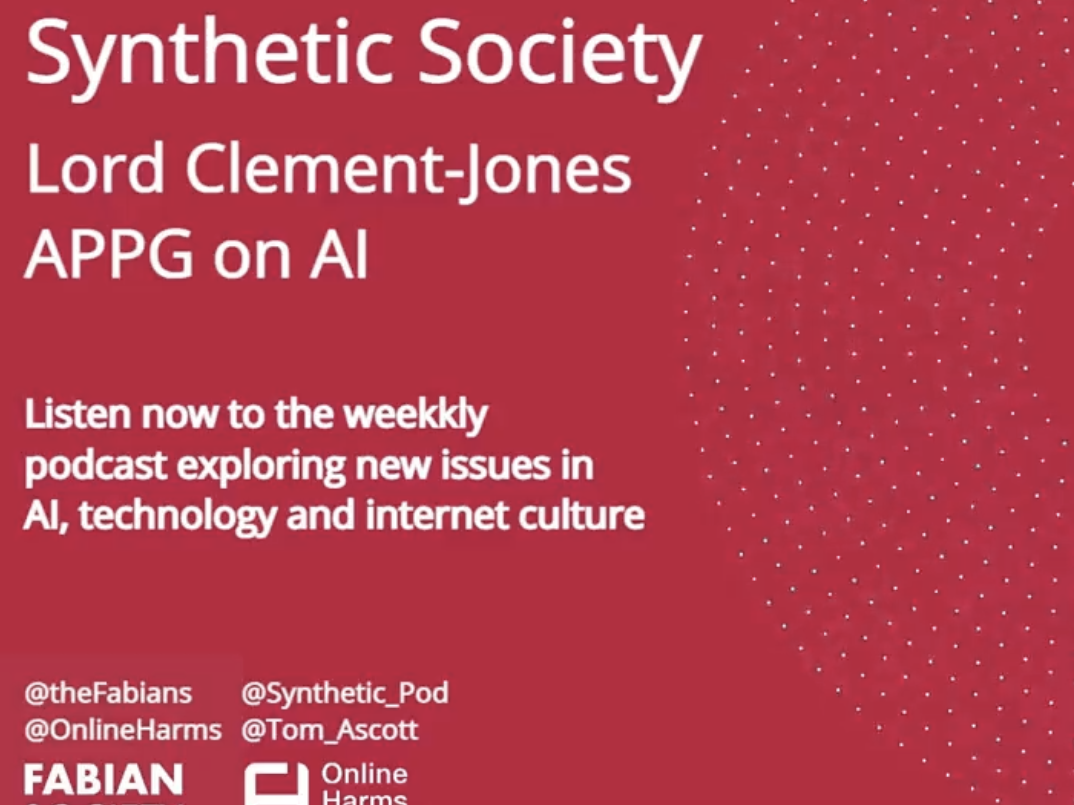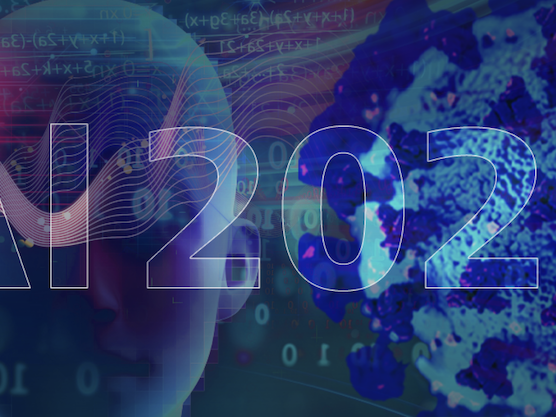Here is the text and video of what I said at this stimulating and useful event hosted by the International Congress for the Goverance of AI

It is now my pleasure to introduce Lord Clement-Jones, also in a video presentation. He is the former chair of the House of Lords Select Committee on AI. He is the co-chair of the All-Party Parliamentary Group on AI, and he is a founding member of the OECD Parliamentary Group on AI and a member of the Council of Europe’s ad hoc Committee on AI (CAHAI).
LORD TIM CLEMENT-JONES: Hello. It is great to be with you.
Today I am going to try to answer questions such as: What kind of international AI governance is needed? Can we build on existing mechanisms? Or does some new body need to be created?
As the House of Lords in our follow-up report, “AI in the UK: No Room for Complacency,” last December strongly emphasized, it has never been clearer, particularly after this year of COVID-19 and our ever-greater reliance on digital technology, that we need to retain public trust in the adoption of AI, particularly in its more intrusive forms, and that this is a shared issue internationally. To do that, we need, whilst realizing the opportunities, to mitigate the risks involved in the application of AI, and this brings with it the need for clear standards of accountability.
The year 2019 was the year of the formulation of high-level ethical principles in the field of AI by the OECD, the European Union, and the G20. These are very comprehensive and provide the basis for a common set of international standards. For instance, they all include the need for explainability of decisions and an ability to challenge them, a process made more complex when decisions are made in the so-called “black box” of neural networks.
But it has become clear that voluntary ethical guidelines, however much they are widely shared, are not enough to guarantee ethical AI, and there comes a point where the risks attendant on noncompliance with ethical principles is so high that policymakers need to accept that certain forms of AI development and adoption require enhanced governance and/or regulation.
The key factor in 2020 has been the work done at international level in the Council of Europe, OECD, and the European Union towards putting these principles into practice in an approach to regulation which differentiates between different levels of risk and takes this into account when regulatory measures are formulated.
Last spring the European Commission published its white paper on the proposed regulation of AI by a principle-based legal framework targeting high-risk AI systems. As the white paper says, a risk-based approach is important to help ensure that the regulatory intervention is proportionate. However, it requires clear criteria to differentiate between the different AI applications, in particular in relation to the question or not of whether they are high-risk. The determination of what is a high-risk AI application should be clear, easily understandable, and applicable for all parties concerned.
In the autumn the European Parliament adopted its framework for ethical AI to be applicable to AI, robotics, and related technologies developed, deployed, and/or used within the European Union. Like the Commission’s white paper, this proposal also targets high-risk AI. As well as the social and environmental aspects notable in this proposed ethical framework is the emphasis on human oversight required to achieve certification.
Looking through the lens of human rights, including democracy and the rule of law, the CAHAI last December drew up a feasibility study for regulation of AI, which likewise advocates a risk-based approach to regulation. It considers the feasibility of a legal framework for AI and how that might best be achieved. As the study says, these risks, however, depend on the application, context, technology, and stakeholders involved. To counter any stifling of socially beneficial AI innovation and to ensure that the benefits of this technology can be reaped fully while adequately tackling its risks, the CAHAI recommends that a future Council of Europe legal framework on AI should pursue a risk-based approach targeting the specific application context, and work is now ongoing to draft binding and non-binding instruments to take the study forward.
If, however, we aspire to a risk-based regulatory and governance approach, we need to be able to calibrate the risks, which will determine what level of governance we need to go to. But, as has been well illustrated during the COVID-19 pandemic, the language of risk is fraught with misunderstanding. When it comes to AI technologies we need to assess the risks by reference to the nature of AI applications and the context of their use. The potential impact and probability of harm, the importance and sensitivity of use of data, the application within a particular sector, the affected stakeholders, the risks of non-compliance, and whether a human in the loop mitigates risk to any degree.
In this respect, the detailed and authoritative classification work carried out by another international initiative, the OECD Network of Experts on AI working group, so-called “ONE AI,” on the classification of AI systems comes at a crucial and timely point. This gives policymakers a simple lens through which to view the deployment of any particular AI system. Its classification uses four dimensions: context, i.e., sector, stakeholder, purpose, etc.; data and input; AI model, i.e., neural or linear, supervised or unsupervised; and tasks and output, i.e., what does the AI do? It ties in well with the Council of Europe feasibility work.
When it comes to AI technologies we need to assess the risks by reference to the nature of the AI applications and their use, and this kind of calibration, a clear governance hierarchy, can be followed depending on the level of risk assessed. Where the risk is relatively low, a flexible approach such as a voluntary ethical code without a hard compliance mechanism, can be envisaged, such as those enshrined in the international ethical codes mentioned earlier.
Where the risk is a step higher, enhanced corporate governance using business guidelines and standards with clear disclosure and compliance mechanisms needs to be instituted. Already at international level we have guidelines on government best practice, such as the AI procurement guidelines developed by the World Economic Forum, and these have been adopted by the UK government. Finally we may need to introduce comprehensive regulation, such as that which is being adopted for autonomous vehicles, which is enforceable by law.
Given the way the work of all of these organizations is converging, the key question of course is whether on the basis of this kind of commonly held ethical evaluation and risk classification and assessment there are early candidates for regulation and to what extent this can or should be internationally driven. Concern about the use of live facial recognition technologies is becoming widespread with many U.S. cities banning its use and proposals for its regulation under discussion in the European Union and the United Kingdom.
Of concern too are technologies involving deep fakes and algorithmic decision making in sensitive areas, such as criminal justice and financial services. The debate over hard and soft law in this area is by no means concluded, but there is no doubt that pooling expertise at international level could bear fruit. A common international framework informed by the work so far of the high-level panel on digital cooperation, the UN Human Rights Council, and their AI for Good platform, and brokered by UNESCO, where an expert group has been working on a recommendation on the ethics of artificial intelligence. The ITU or the United Nations itself, which in 2019 established a Centre for Artificial Intelligence and Robotics in the Netherlands, could be created, and this could gain public trust for establishing that adopters are accountable for high-risk AI applications and at the same time allay concerns that AI and other digital technologies are being over-regulated.
Given that our aim internationally on AI governance must be to ensure that the cardinal principle is observed that AI needs to be our servant and not our master, there is cause for optimism that experts, policymakers, and regulators now recognize that they have a duty to ensure that whatever solution they adopt they recognize ascending degrees of AI risk and that policies and solutions are classified and calibrated accordingly.
Regulators themselves are now becoming more of a focus. Our House of Lords report recommended regulator training in AI ethics and risk assessment, and I believe that this will become the norm. But even if at this juncture we cannot yet identify a single body to take the work forward, there is clearly a growing common international AI agenda, and—especially I hope with the Biden administration coming much more into the action—we can all expect further progress in 2021.
Thank you.






